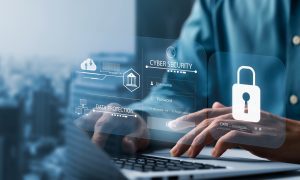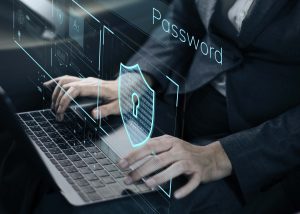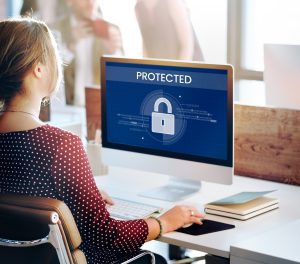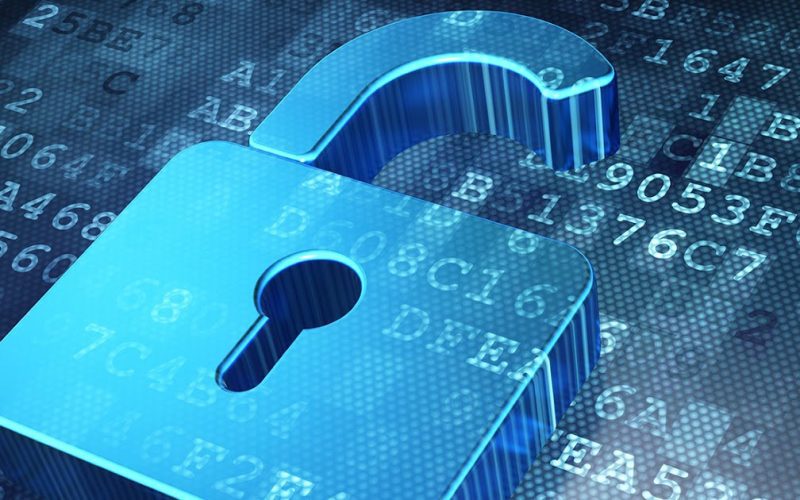Introduction
In today’s hyper-connected world, protecting your privacy online is more important than ever. With data breaches, identity theft, and targeted ads becoming increasingly common, it’s easy to feel overwhelmed by the risks. But don’t worry safeguarding your digital footprint doesn’t have to be complicated. By adopting a few simple habits and making smarter choices, you can significantly reduce your exposure to online threats. Whether you’re browsing the web, using social media, or shopping online, these practical tips will help you stay in control of your personal information. In this article, we’ll explore the best strategies to protect your privacy in a digital world, ensuring your data stays secure and your peace of mind intact. Ready to take charge of your online security? Let’s dive in.
What is Digital Privacy?

Digital privacy refers to keeping your personal information safe when you use the internet. This includes everything from your browsing history to your credit card details and social media posts. With the rise in cyberattacks and data breaches, it’s important to take steps to protect your data.
When you’re online, your privacy is at risk from:
- Hackers who may try to steal your personal information.
- Companies that collect and sell your data to others.
- Government surveillance that monitors online activity in some countries.
By following privacy tips and taking action, you can keep your personal information safe from these risks.
Simple Tips to Protect Your Privacy Online

1. Use Strong, Unique Passwords
One of the simplest yet most effective ways to protect your privacy is by using strong, unique passwords for each of your accounts.
Tip: Use a mix of letters, numbers, and symbols, and avoid using the same password across multiple sites.
Example: “I started using a password manager to generate and store complex passwords, and it made managing my accounts so much easier.”
2. Enable Two-Factor Authentication
Two-factor authentication (2FA) adds an extra layer of security by requiring a second form of verification, like a text message or authentication app.
Tip: Enable 2FA on all accounts that offer it, especially for email, banking, and social media.
Example: “After enabling 2FA on my email, I felt more secure knowing that even if my password was compromised, my account would still be protected.”
3. Be Cautious with Public Wi-Fi
Public Wi-Fi networks are convenient but often insecure, making it easier for hackers to intercept your data.
Tip: Avoid accessing sensitive information on public Wi-Fi, and use a VPN (Virtual Private Network) for added security.
Example: “I use a VPN when connecting to public Wi-Fi at coffee shops, which encrypts my data and keeps it safe from prying eyes.”
4. Limit What You Share on Social Media
Oversharing on social media can make you a target for identity theft, phishing, and other privacy risks.
Tip: Adjust your privacy settings to control who can see your posts, and avoid sharing personal details like your address or phone number.
Example: “I reviewed my social media settings and was surprised at how much personal information I was unintentionally sharing.”
5. Keep Your Software Up to Date
Regular software updates often include important security patches that protect your devices from vulnerabilities.
Tip: Enable automatic updates on your devices and apps to ensure you’re always protected.
Example: “After a major data breach, I realized the importance of keeping my software updated to avoid potential security flaws.”
6. Use Privacy-Focused Browsers and Search Engines
Some browsers and search engines prioritize your privacy by limiting tracking and data collection.
Tip: Consider using browsers like Firefox or Brave and search engines like DuckDuckGo that emphasize privacy.
Example: “Switching to a privacy-focused browser reduced the number of targeted ads I saw and made me feel more in control of my data.”
7. Be Wary of Phishing Scams
Phishing scams trick you into revealing personal information through fake emails or websites.
Tip: Always verify the sender’s email address, and never click on suspicious links or attachments.
Example: “I received a convincing email from what looked like my bank, but a closer look revealed it was a phishing attempt.”
8. Review App Permissions Regularly
Many apps request access to more information than they need. Reviewing these permissions helps protect your data.
Tip: Check your app settings and revoke permissions that seem unnecessary.
Example: “I found that several apps had access to my location and contacts—I adjusted the settings to limit data sharing.”
Online Security Best Practices

In addition to privacy tips, following these best practices can help you stay safe online:
1. Keep Your Software Updated
Updates for your phone, computer, and apps often include important security fixes. When your software is up to date, it’s harder for hackers to break into your system.
2. Install Antivirus Software
Antivirus software helps protect your devices from harmful software, like viruses and malware. It can detect threats and block them before they can cause damage to your personal information.
3. Watch Out for Phishing Scams
Phishing is when hackers trick you into giving away personal information. They often do this by sending fake emails that look like they’re from legitimate companies. Be cautious of any email asking for personal details, and always double-check the sender’s address before clicking on links or opening attachments.
4. Block Unnecessary Cookies and Trackers
Websites use cookies to track your online behavior and show you targeted ads. While not always harmful, they can be used to collect more data about you than you might want. Use your browser settings to block cookies or install privacy-focused extensions that limit tracking.
5. Review Your Digital Footprint
Over time, you may have shared more information online than you realize. Take time to review what’s out there about you, including old social media posts and accounts you no longer use. Remove or update any information that isn’t necessary.
Why Privacy Matters More Than Ever
In today’s world, privacy is becoming more important because so much of our lives happen online. We share personal details like our names, addresses, and credit card numbers when we shop, talk to friends, or use social media. This makes it easy for hackers to steal information or for companies to track our behavior. If we don’t protect our privacy, we risk having our personal information misused.
The Growing Risk of Cyberattacks

Cyberattacks are one of the biggest risks to our online privacy. Hackers can break into websites, steal personal data, and even use it for identity theft. They can target anything from your email account to your bank details. To prevent this, it’s important to use strong passwords, keep software updated, and be cautious when clicking on links or downloading files.
The Importance of Keeping Software Updated
One simple way to protect your privacy is by keeping your devices and apps up to date. When software companies release updates, they often include fixes for security problems. These fixes help protect your device from cyberattacks. So, even though updates may seem annoying, they are important for keeping your information safe.
The Role of Passwords in Online Security

Strong passwords are key to protecting your online privacy. A weak password, like “password123,” is easy for hackers to guess. Instead, use a combination of letters, numbers, and symbols to make it harder for hackers to crack. You should also change your passwords regularly and never use the same password for multiple accounts.
Using Tools to Protect Your Privacy
There are several tools that can help keep your information safe online. For example, using a Virtual Private Network (VPN) can protect your data when using public Wi-Fi. Antivirus software helps guard against malicious software. Additionally, password managers can help you keep track of your passwords in a safe way. These tools make it easier to protect your privacy without having to worry about technical details.
Challenges to Privacy Protection
Protecting privacy online is not always easy. One of the biggest challenges is the constant risk of cyberattacks, like hacking and phishing. Many websites and apps collect personal data, and some of them may not be secure. There are also many laws and rules about privacy, which can vary by country, making it hard to know what protections apply to you. These challenges make it important to stay informed about new risks and how to deal with them.
The Future of Digital Privacy

The future of digital privacy will likely see stronger protections and more advanced tools. As technology evolves, we may see improvements in encryption, better data protection laws, and smarter ways to secure personal information. However, new challenges will also arise as the internet continues to grow. Staying up to date with new privacy measures and practices will be key to protecting your information in the future.
Analyzing Digital Privacy Practices
To see how well you’re protecting your privacy, take a look at the table below. It shows the importance, effectiveness, and ease of different privacy practices.
| Practice | Importance | Effectiveness | Easy to Do |
|---|---|---|---|
| Strong Passwords | High | High | Easy |
| Two-Factor Authentication (2FA) | High | Very High | Medium |
| Avoiding Public Wi-Fi Risks | High | Moderate | Easy |
| Limiting Shared Information | High | High | Medium |
| Using Encryption | Very High | Very High | Medium |
As you can see, using strong passwords and enabling two-factor authentication are two of the most effective ways to protect your privacy online. Avoiding risky public Wi-Fi and limiting the information you share also play important roles in keeping you safe.
Comparing Privacy Protection Tools
There are several tools you can use to improve your privacy. Here’s a comparison of some popular options:
| Tool | What It Does | Best For | Cost |
|---|---|---|---|
| Password Manager (e.g., LastPass) | Stores and creates strong passwords | Managing multiple passwords | Free or paid |
| Virtual Private Network (VPN) | Encrypts your internet connection | Browsing safely on public Wi-Fi | Paid (some free options) |
| Antivirus Software (e.g., Norton) | Protects your device from malware | General device protection | Paid |
| Two-Factor Authentication (2FA) | Adds an extra layer of security | Protecting all online accounts | Free |
| Encrypted Messaging (e.g., Signal) | Keeps your messages private | Private messaging | Free |
These tools can help you protect your privacy by making it harder for others to access your personal information.
Conclusion
Protecting your privacy in the digital world doesn’t have to be overwhelming. By adopting simple habits like using strong passwords, enabling two-factor authentication, and being mindful of what you share online, you can significantly reduce your risk of data breaches and identity theft. Staying informed about the latest security practices and regularly reviewing your privacy settings will keep you one step ahead of potential threats. Remember, your personal information is valuable treat it with care and take proactive steps to safeguard it. With these practical tips, you can navigate the digital world confidently and securely.
Call to Action
What steps do you take to protect your privacy online? Share your tips in the comments below, and subscribe for more digital security advice and tech insights!












